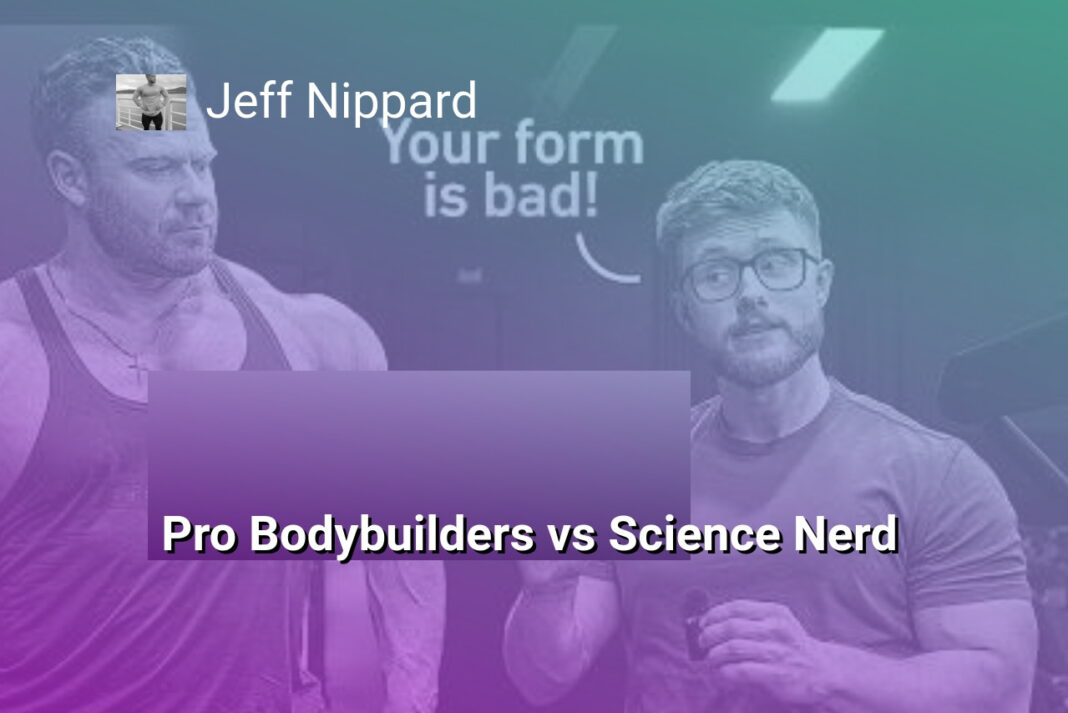The Bottom Line:
Here is a summary of the main points in first-person perspective:
- I’ve learned that getting lean and reaching 10-15% body fat often takes much longer than people initially expect, and underestimating the process can lead to frustration and loss of motivation.
- I discovered that people, including myself, frequently underestimate how much body fat they actually need to lose to achieve their desired physique, and this realization was a significant lesson in my own fitness journey.
- I’ve come to understand that society’s perception of what constitutes a “normal” weight has been distorted by the obesity epidemic, and it’s crucial to set goals based on personal body composition and fat percentage rather than others’ opinions.
- I recognize that making mistakes and experiencing setbacks are inevitable when trying to adopt new habits and reach a body fat percentage I haven’t achieved before, but learning from these mistakes is essential for long-term success.
- I believe that fat loss is a skill set that is developed over time through persistence, learning from mistakes, and continuously refining one’s approach, rather than expecting perfect consistency from the start.
Underestimating Body Fat Percentage and the Amount to Lose
The Reality of Body Fat Percentage
Many people underestimate their body fat percentage, especially when they are at a higher body weight. Devices like smart scales or inbody scans can also contribute to this underestimation. If you’re trying to get lean for the first time and don’t have years of serious weight training experience, a good rule of thumb is that your goal weight for a lean physique will likely be below your height in centimeters minus 100. For example, if you’re 5’10” (178 cm), your weight to get a lean physique will likely be around 78 kilos or 172 lbs.
Setting Realistic Expectations
It’s important to set the right expectations from the get-go when starting your fat loss journey. Nearly everyone greatly underestimates the amount of body fat they have and overestimates how much muscle they have. The obesity epidemic has distorted our perception of what a normal, lean, and healthy human body looks like. When you start losing weight, don’t expect people to automatically understand your goals. You may receive comments such as “you’re getting too thin” or “you don’t need to lose any more weight.” Stick to your plan and focus on how you want to look in the mirror, your body composition, and your body fat percentage.
Learning from Mistakes
Getting lean will likely take longer than you think because you’re going to make mistakes along the way, especially if you’re dieting to a body fat percentage that you haven’t been at before. Setbacks such as vacations, holidays, birthdays, nights out, stressful weeks at work, or family stress are inevitable. Habit change is a process, and you’ll make progress, have setbacks, recover, and make more progress over time. Learn from your mistakes, and those setbacks will become less frequent and less severe. Fat loss is a skill set that you learn and build over time, and that’s what will make getting and staying lean sustainable long-term.
Forgetting What a Normal, Healthy Weight Looks Like
The Obesity Epidemic Has Distorted Our Perception of a Healthy Weight
In today’s society, where obesity rates have skyrocketed, our understanding of what constitutes a normal, healthy weight has become skewed. We’ve grown accustomed to seeing people carrying excess body fat, to the point where it has become the new norm. This distortion of reality can lead to significant underestimation of how much weight one needs to lose to achieve a lean physique.
Setting Realistic Expectations Based on Your Height and Body Composition
When setting weight loss goals, it’s crucial to focus on your desired body composition and body fat percentage rather than solely relying on the number on the scale. A good rule of thumb is that if you’re aiming for a lean physique and don’t have years of serious weight training experience, your goal weight will likely be below your height in centimeters minus 100. For example, if you’re 178 cm (5’10”), your target weight for a lean physique would be around 78 kg (172 lbs).
Preparing for Comments and Concerns from Others
As you progress in your weight loss journey, you may receive comments from others expressing concern about your weight, such as “you’re getting too thin” or “you don’t need to lose any more.” These comments often stem from a place of concern, as people are used to seeing weight loss associated with illness. However, it’s important to remember that the obesity epidemic has distorted our perception of what a normal, lean, and healthy body looks like. Stick to your plan, focus on your body composition goals, and remember that you can always strategically add muscle through a dedicated muscle-building phase once you’ve reached your desired level of leanness.
Making Mistakes and Learning from Setbacks is Part of the Process
Embracing Setbacks as Learning Opportunities
Making mistakes and experiencing setbacks are an inevitable part of the fat loss journey, especially when you’re aiming for a body fat percentage that you haven’t reached before, such as 12 or 15%. It’s not a matter of if you’ll face setbacks, but rather when. Vacations, holidays, birthdays, nights out, stressful weeks at work, or family stress can all contribute to momentary lapses in your diet and exercise routine. It’s important to understand that old habits won’t disappear overnight just because you’ve decided to get lean.
The Process of Habit Change
Habit change is a gradual process, not an on-and-off switch. You’ll make progress, encounter setbacks, recover, make more progress, and face another setback. The key is to learn from your mistakes and ensure that these setbacks become less frequent and less severe over time. For example, if weekends used to be a problem, you can start predicting how the weekend might go, plan your calories and macros, check menus ahead of time, and pre-log meals in your food tracker. This way, you’ll know exactly what to order at a restaurant.
Adapting Your Approach Based on Experience
As you progress through your fat loss journey, you’ll discover the weaknesses in your plan and learn how to fix them. You might realize that certain trigger foods need to be avoided and kept out of the house, or that high-intensity cardio makes you too hungry, leading you to focus on increasing your step count instead. You may also find that cutting out alcohol is necessary because a few drinks can lead to poor eating decisions and bad sleep, making it harder to stick to your plan. These realizations often come from making mistakes, which can be painful but ultimately help you refine your approach.
Remember, no one is 100% perfectly consistent, and you don’t need to be to see great results. The key is to be persistent, learn from your mistakes, and keep coming back to your plan. Fat loss is a skill set that you develop over time, and it’s this process that makes getting and staying lean sustainable in the long term.
Fat Loss is a Skill Set Built Over Time Through Persistence
Consistency Trumps Perfection
When it comes to losing fat and getting lean, consistency is key. You don’t need to be perfect with your diet and exercise regimen, but you do need to be persistent. It’s inevitable that you’ll make mistakes along the way, especially if you’re trying to reach a body fat percentage that you’ve never achieved before. Setbacks such as vacations, holidays, birthdays, nights out, stressful weeks at work, or family stress can all derail your progress. However, it’s important to learn from these mistakes and get back on track.
Developing Lean Eating Habits Takes Time
Transitioning from overweight eating habits to lean eating habits doesn’t happen overnight. It’s a gradual process that requires patience and persistence. You’ll make some progress, then have a setback, recover, make a little more progress, and then have another setback. The key is to learn from your mistakes and make adjustments to your plan. For example, if weekends are a problem, you can plan your calories and macros ahead of time, check menus in advance, and pre-log your meals in a food tracker. If high-intensity cardio is making you too hungry, you can focus on walking more and increasing your step count instead.
Fat Loss is a Skill Set
Getting lean is not just about following a strict diet and exercise plan. It’s a skill set that you develop over time through trial and error. You’ll need to learn how to navigate social situations, manage stress, and make healthy choices even when you’re not in your usual routine. This takes practice and persistence. You may need to cut out certain trigger foods or avoid alcohol if it leads to poor eating decisions and bad sleep. These are all skills that you’ll develop as you work towards your fat loss goals. Remember, fat loss is a journey, not a destination. It takes time, effort, and patience to achieve sustainable results.
Setting Realistic Expectations is Key to Staying Motivated
Understanding Your Starting Point
One of the most common mistakes people make when setting out to get lean is underestimating their current body fat percentage. It’s easy to believe that you only need to lose a small amount of weight to reach your goal, but the reality is often quite different. Many individuals who think they need to lose 20 pounds to reach 12-15% body fat may actually need to lose 40 pounds or more. This misconception can be attributed to several factors, including inaccurate body fat measuring devices and a lack of understanding of what a truly lean physique looks like.
Setting Realistic Goals
To set realistic expectations for your fat loss journey, it’s important to have a clear idea of what your goal weight should be. A simple formula to estimate your goal weight is to subtract 100 from your height in centimeters. For example, if you’re 5’10” (178 cm), your goal weight for a lean physique would be around 78 kilos (172 lbs). Keep in mind that this is just an estimate, and individual results may vary based on factors such as muscle mass and body composition.
It’s also crucial to understand that reaching your goal weight may take longer than you initially anticipated. Don’t be discouraged if you don’t see the results you expected after losing a certain amount of weight. Stay focused on your ultimate goal and trust the process.
Embracing the Learning Curve
Another reason why getting lean takes longer than expected is that you’ll likely make mistakes along the way, especially if you’re aiming for a body fat percentage you haven’t reached before. Setbacks are inevitable, whether they’re caused by vacations, holidays, work stress, or family obligations. The key is to learn from these mistakes and develop strategies to overcome them in the future.
As you progress in your fat loss journey, you’ll learn which foods trigger overeating, how to plan your meals in advance, and which types of exercise work best for your body and lifestyle. This process of trial and error is essential for building sustainable habits that will help you not only reach your goal but also maintain your lean physique long-term.
Remember, consistency is more important than perfection. You don’t need to be 100% perfect all the time to see great results. Focus on being persistent, learning from your mistakes, and continuously refining your approach. With patience and dedication, you’ll develop the skills necessary to achieve and maintain the lean body you desire.





